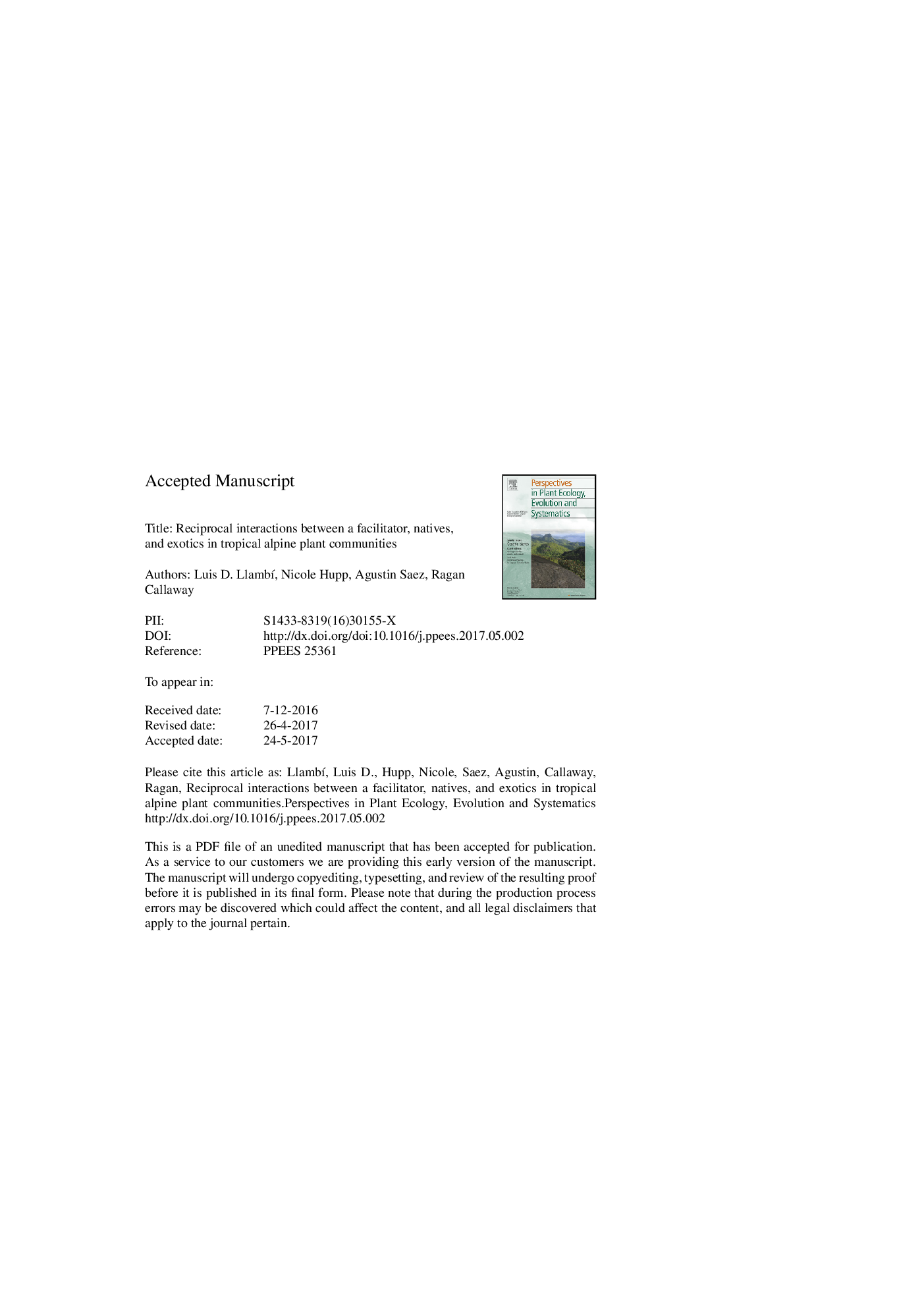| Article ID | Journal | Published Year | Pages | File Type |
|---|---|---|---|---|
| 8849523 | Perspectives in Plant Ecology, Evolution and Systematics | 2018 | 29 Pages |
Abstract
Facilitation by nurse plants has received considerable attention, but the feedback effects of beneficiaries on the benefactor fitness remain comparatively unexplored. In particular, to our knowledge there have been no studies of feedback effects of exotic species on nurse plants. Furthermore, there have been few studies of how exotic plants interact with native beneficiaries, potentially generating indirect effects on the nurse. Here, through spatial association analyses, we estimate the reciprocal interactions between the cushion nurse-plant Arenaria musciformis, native beneficiaries, and the dominant exotic Rumex acetosella (a fast growing heliophile species) in a tropical alpine ecosystem of the Venezuelan Andes, locally known as páramos. We recorded the density of natives and the exotic within Arenaria cushions and in paired open areas at three sites and calculated Relative Interaction Indices (RII) to explore the effects of the cushion. Then, we analyzed the feedback effects of Rumex and the natives on the density of flowers produced by Arenaria. Finally, we analyzed how Rumex abundance is related to the abundance of native species inside and outside cushions. RIIs indicated a facilitative effect of cushions on the abundance of native plants, but no effect on Rumex. We found a negative relationship between the density of natives and cushion flower density, but no such relationship for Rumex. However, at high densities, Rumex was negatively correlated with the abundance of the natives both inside and outside of cushions. Our results suggest the possibility of complex reciprocal interactions between nurses, natives and exotics, and that native and exotic plants can differ in their feedback effects on nurse cushions. Native plants appeared to be facilitated by cushions and then develop a parasitic relationship with their nurses. In contrast, the exotic Rumex had a neutral interaction with the nurse, but competitive effects on the native beneficiary community, which could indirectly modulate the feedback effects of natives on the nurse. These results highlight the importance of analyzing direct and indirect reciprocal interactions and the impacts of exotic invaders for understanding alpine community assembly.
Related Topics
Life Sciences
Agricultural and Biological Sciences
Ecology, Evolution, Behavior and Systematics
Authors
Luis D. LlambÃ, Nicole Hupp, Agustin Saez, Ragan Callaway,
